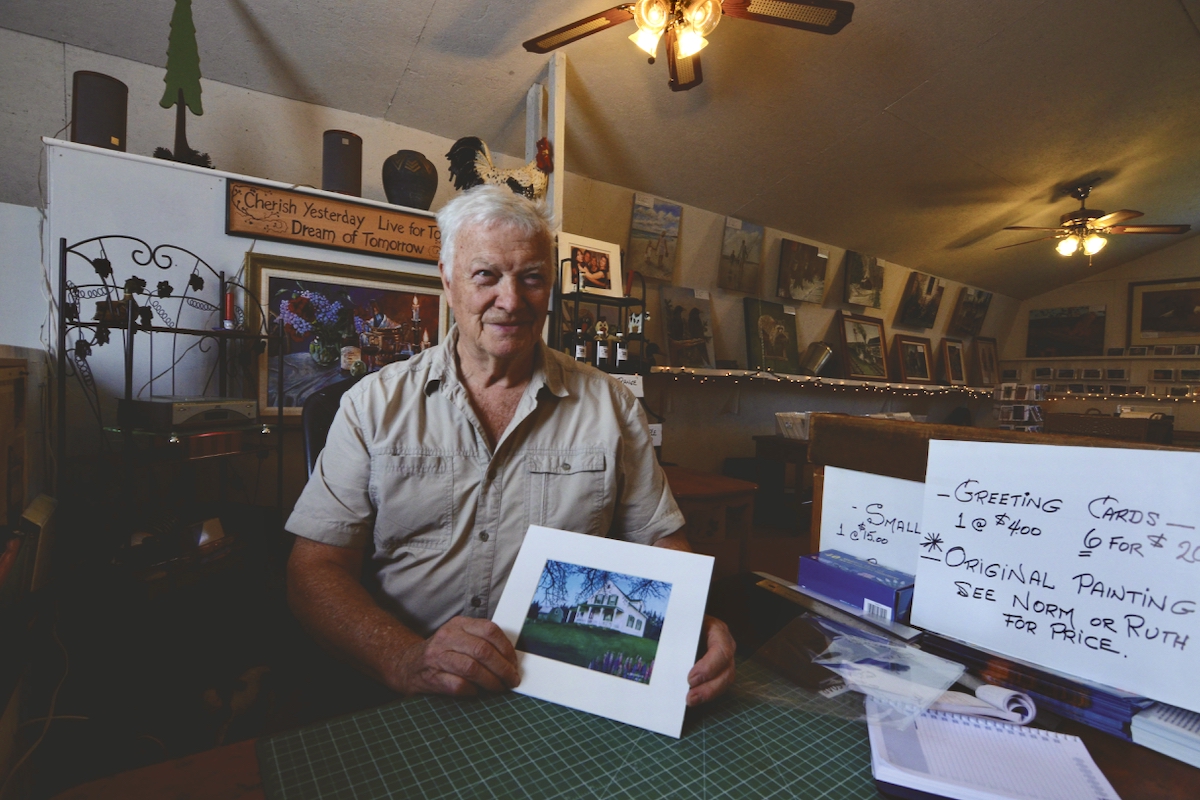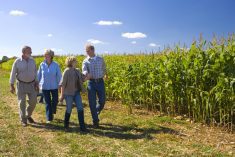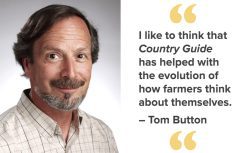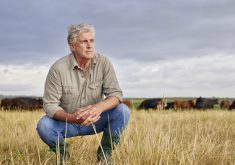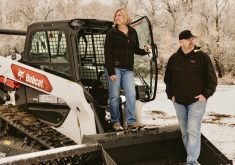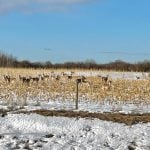Farming is more than a career, it’s an identity. Which, up to a point, is a good thing. But the evidence is in, and it says that if the farm takes too much of your time and too much of your energy, that’s not good for your mental health, or for the health of your farm.
Besides, higher land values and stronger farm incomes mean more farmers have more freedom to indulge in their non-farm passions.
But what are those passions? Which ones should you consider? And what insights do farm retirees have that could help mid-career and even young farmers?
Read Also

The big squeeze: How to be fair to siblings during farm succession
Managing sibling business relationships on family farms.
New Brunswick farmer Norm Bradford found that painting artworks in winter helped him get through the long, dark days.
Admittedly, it may not be an idea that appeals to the broad mass of farmers, even though research at the University of Waterloo shows participating in the arts across our lifespan has positive impacts on multiple domains of health and wellness including the physical, cognitive, emotional, social and spiritual.
The point, though, is that like a lot of non-farm passions, Bradford’s has solid links to the farm, which is what he paints. It also takes on a life of its own, like the way Bradford has converted the second floor of a barn into a gallery. Bradford’s passion also helps him engage with other people, not just during art classes and such, but with gallery visitors when he talks to them about the stories behind the scenes he’s painted.
Another key is that his artwork lets him be true to his fundamental character, because, he says, like a lot of farmers he’s a self-described homebody.
Suddenly, the strange idea of a farmer who paints isn’t so strange at all.
Bradford believes everyone has a talent or a passion and that it would be a shame to ignore it. “Be it cooking, baking, sewing, painting, fishing, renovating, building, growing exotic plants, repairing old cars… time flies when you are in your own private world,” he says.
Calgary’s Nell Smith, author of Retire to the Life You Love: Practical Tools for Designing Your Meaningful Future knows that many farmers will say they aren’t creative, to which she instantly responds that it isn’t the outcome of the creative process that’s important, “the process is.”
Being creative could include writing your life story for your grandchildren, singing, doodling, crafts, dance or so much more. It involves asking yourself about your strengths, including the ones you had when you were younger but have dropped along the way. What have you always thought it might be fun to try? Is there a friend or family member who could join in?
It’s also important at this stage to just think in terms of what’s possible. Don’t rule things out because they seem impractical. You’ve run a farm all these years, which means you could probably sort out those practicality issues if you put your mind to it.
Especially don’t rule things out because you think you won’t have time.
If it seems like time is an issue, Laura Vanderkam, the Philadelphia author of several books on time management, says most of us can find the time to add activities to our schedules by tracking our time for a week. You can use a spreadsheet, an app on your phone or a notebook to track your time. Look for gaps such as time spent mindlessly watching TV or scrolling through social media on your smartphone.
“If you want to spend your time better, the first step is figuring out exactly how you spend it now,” says Vanderkam.
What interests you?
Not sure what interests you? Many life and executive coaches recommend spending between 30 and 60 minutes a week away from your desk with your phone notifications turned off so you can reflect, let your mind wander and daydream. This doesn’t have to mean sitting still. You could go for a walk in nature, journal or play a drum.
It can help to get engaged in off-farm groups too, whether they are agricultural or not. Joining a local service club will extend your network and provide opportunities to use your management skills to investigate local needs and opportunities.
Smith has other suggestions for places to look for inspiration. Be a tourist in your own community and across your region. Attend a fair or exhibition. Go to car shows and antique tractor displays. Buy tickets for amateur theatricals, check out the volunteer needs at your local schools, drop by the local food bank.
Make getting to know your community your hobby for the year. Set goals. Make an action plan.
Also stretch your wings. Each time you return from travelling, make a list of five or seven things you saw that you might want to investigate more and that might be a good match for you as a person, even if at first glance they seem a poor match for you on your farm.
Watch documentaries and newscasts, buy a library membership and check out its list of activities, attend a conference through an organization you belong to, or register for online or in-person credit or non-credit courses through colleges, universities, etc.
The internet has brought many more opportunities to rural Canada including access to courses, volunteering, and work which could include full-time or part-time contracts, gigs or self-employment.
If this all sounds more organized than you expected, Smith says that’s a good thing. For farmers, in fact, it can help to think of your search for non-farm activities as a kind of research project, except this time instead of trying to boost your crop yields, your goals include boosting your personal and business health.
Smith wrote her book —the culmination of all she learned during her decades of giving retirement planning assistance to thousands of participants — when she was 74. People are living longer and Smith sees that longevity as a gift. Today, retirement is no longer a matter of “all leisure and no work,” she says, adding that you can continue to make a meaningful contribution for many years.
Now aged 82, Smith says she finally considers herself fully retired. She has created a whole lifestyle that doesn’t involve working. She enjoys spending time in nature and has joined a hiking group, a book club and a choir. She also does Tai Chi every week. These activities give her community connections, but she also has a couple of days a week when she has the flexibility of not having any commitments.
Smith’s book can be used as a workbook to help you determine which of a myriad of hobbies, sports and volunteer opportunities best fit your personality, temperament and interests.
Dig deeper to find your passions
The five outer circles in Nell Smith’s model reflect how we choose to express our authentic selves. The five circles are:
- Just be: What brings you joy, happiness and contentment?
- Be well: What will boost your physical and mental well-being?
- Be compassionate: How can you build stronger relationships with family, friends and society?
- Be a contributor: How can you use your skills, knowledge and wisdom for the greater good?
- Be curious: How can you stretch yourself to develop new skills and interests?
Smith also recommends using her “Six Circles of Life” model, which acknowledges how different life roles and activities are connected, to help you choose options which fit who you are as an individual with unique needs, desires, values and strengths.
The inner circle of the model reflects the inner core of who we are, explains Smith. Self-awareness will help you to understand and prioritize what is important to you personally. “It is a way to live your life in an authentic way with meaning, joy, and fulfilment as individual and unique as you are.”
For starters, are you introverted or extroverted? If you are energized by spending time alone or with one or two other people, you likely fall on the more introverted end of the spectrum. If you are extroverted, you get more energy by spending time with a lot of people. While introverts can be social, being around a large number of people tends to drain rather than energize.
Smith’s Personal Values Clarification Tool can help you narrow down what is most important to you. “Values,” explains Smith, “are at the core of our being and indicate what matters to us more than anything else in the world.” Knowing what’s important to you will help you decide how to spend your time and where to put your energy so “you live by design, not by default, guilt or ‘shoulds’.”
Resources
- Retire to the Life You Love: Practical Tools for Designing Your Meaningful Future, a book by Nell Smith https://retiretothelifeyoulove.com/
- Sample time log available on time management expert Laura Vanderkam’s website
- In Ontario, the Third Age Network is an association of lifelong learning groups
- Coursera.org is a U.S.-based massive open online course provider founded in 2012 by Stanford University. Many courses are available free of charge on a wide range of topics.


